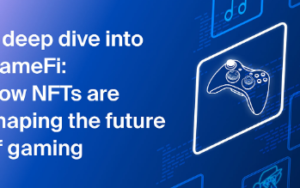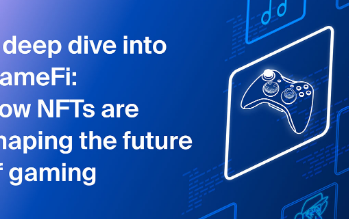The Rise of Play-to-Earn: How NFTs Are Changing the Gaming Industry
The gaming industry is one in rapid evolution, and the rise of the play-to-earn model is deeply changing how players interact with games and others. More and more, these players seek a way to create real value from their gameplay. In this sea change, the need for change in strategy is forced on gaming companies.
The main contributors to this are NFTs, which allow players to have ownership of unique in-game assets and hence give them some sort of stake in the outcome of the games they enjoy. With these growing trends, many are curious about how these new models will influence the future of gaming.
Anyone looking to understand how this development of gaming is going to set the landscape going forward should have some understanding of the impact of play-to-earn and NFTs. With even more players entering this space, the potential for innovation and profit is huge.
Key Takeaways
- Play-to-earn models upend how games are designed and played.
- NFTs give players true ownership of their in-game assets.
- Industry adoption of these models is rapidly increasing.
Exploring Play-to-Earn Models
Play-to-earn games allow new ways for players to interact with video games. They let the players receive real value thanks to their in-game actions. The section shall explain, among other things, how important NFTs play a role in gaming and what the general technology behind this game is.
Understanding NFTs in Gaming
An NFT is a particular kind of digital asset one can own in a game. Skins, characters, or even virtual land in your games-the things that are displayed-are this kind of NFTs. It cannot be copied or exchanged against its type; thus, making assets unique.
Players can sell or trade these NFTs in markets. This feature adds value, as through it, players are able to create returns on their investments. Gaming and NFT are becoming fast friends. Most games give players true ownership of items .
They can also incentivize player engagement. Gamers are more willing to invest time when they know that their efforts might pay off handsomely .
Economic Effects of Play-to-Earn Games
New economic opportunities were created by play-to-earn games. Players can make real money while playing, and, at times, sufficiently enough to become an income source in their lives. This is quite the fact in countries where traditional jobs are at a minimum.
Their economic system involvement involves reward systems from gameplay. The players can be rewarded with cryptocurrencies or NFTs. Further, they can be sold in cash or reinvested inside the games.
That has changed some players’ lives, bringing them in quite a bit of money. The new model of income has raised debates about equity and privilege in gaming.
Technological Infrastructure for Play-to-Earn
Play-to-earn games are not possible without a solid technological backbone. Blockchain technology, basically, is a must-have for creating and managing NFTs. It brings in transparent ownership records and secure transactions.
In these, smart contracts automate the transaction for such games. That confirms the reception of rewards to participants without the involvement of a middleman. The system develops trust among participants.
In the decentralized platforms, players can easily participate in the economy. New development in technologies keeps on improving the usability. As the infrastructures are developing, the possibilities in the play-to-earn models increase.
Case Studies and Industry Adoption
The P2E has revolutionized the perspective of gaming a lot. While several successful games picture the potential, challenges and setbacks are also important in forming what it will be. Bright is its future; it is in the process of learning and improving since it became an industry.
Successful P2E Games
A few P2E games are in demand. One of the popular variants is Axie Infinity. Axie Infinity is a well-known blockchain-based game where players breed, raise, and battle creatures known as Axies. When these Axies win or are bred, that is when the reward tokens are gained. In 2021, it made more than $1 billion in sales.
Another success is Decentraland-a virtual world where users buy, sell, and barter with virtual land and goods as NFTs. The players earn money by thinking out-of-the-box and investing in the plots of digital real estate.
The Sandbox allows users to create their own games and monetize them. Players purchase ground, construct experiences, and trade on the marketplace. These gaming platforms show that P2E might be fun while it pays.
Challenges and Setbacks
While P2E games are gathering speed, they do contain a set of challenges. Among the big ones, especially, is market volatility. The value of an NFT can be so unpredictable; it sometimes shows wild changes in valuation, thus affecting investment and revenue of players.
Another important issue is that of scalability. This congestion slows down the rate of transactions, which will make players impatient. Developers are at work to improve this among other issues.
Beyond this, accessibility barriers also impede entry into the game by some players. This is due to very high initial costs related to entry of NFTs. Developers are finding ways to make access easier without necessarily compromising quality.
Future of P2E Gaming
The future of P2E gaming looks promising. More developers have begun to take notice of the potential for profit. As technology gets better, the quality of gaming will more likely improve, therefore earning a wider audience.
Gaming companies may continue to forge partnerships with blockchain platforms. Partnerships further give birth to innovative features and experiences.
Regulations will also come in. As governments come up with guidelines, the P2E market may start getting stabilized. More players can join and make the gaming landscape even more colorful and diverse.

Also Read :
